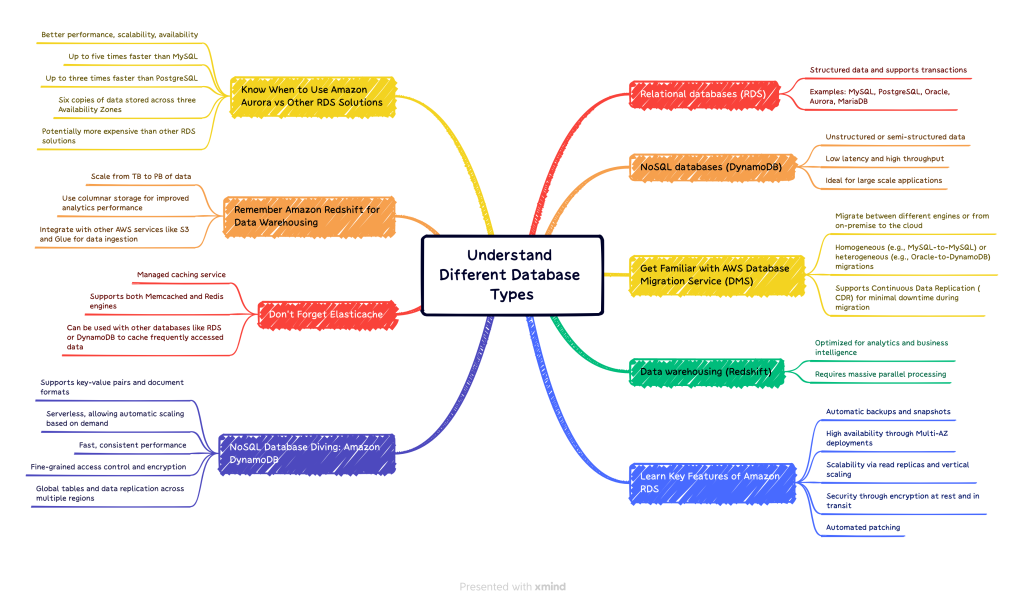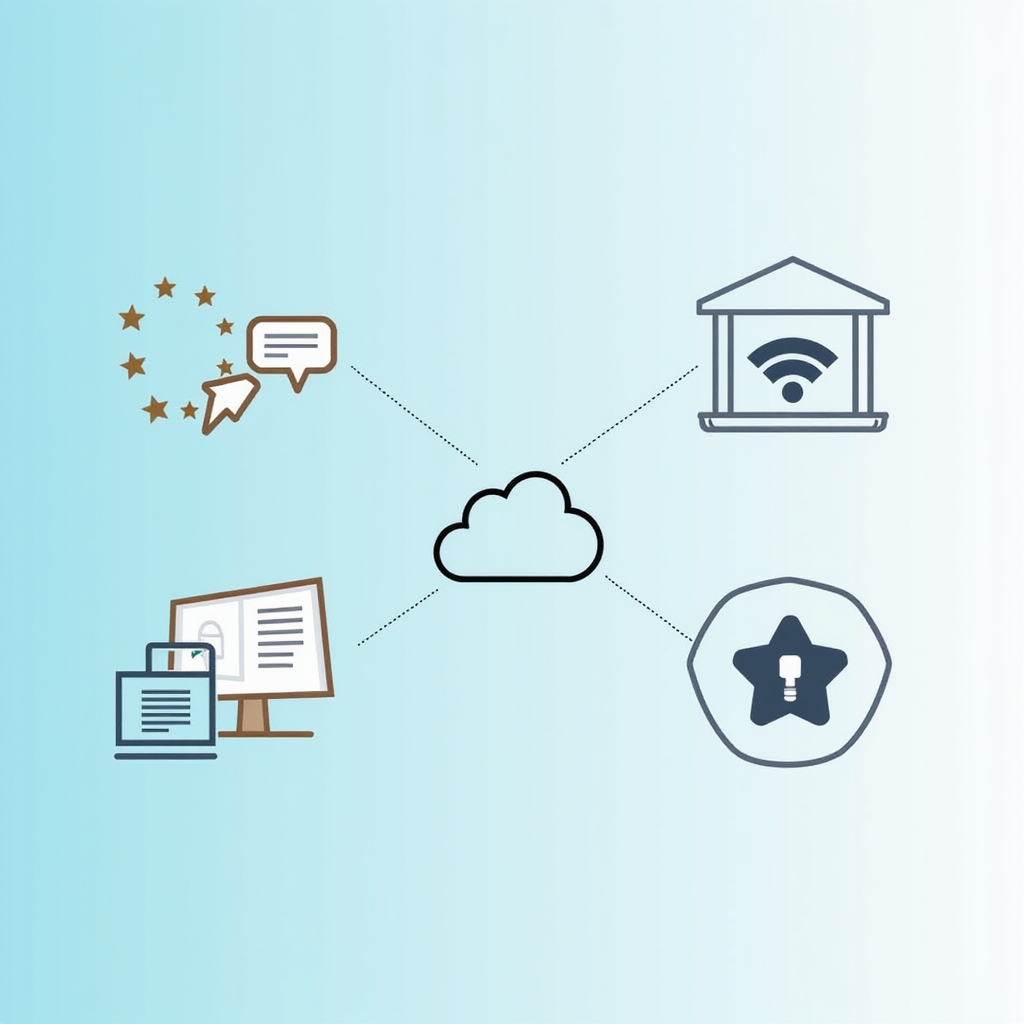Master AWS Databases: Tips for Your Exam

Preparing for your AWS certification exam? Understanding databases on the AWS platform is crucial for success. In this article, we will share helpful tips to help you ace the Database section of the test.
1. Understand Different Database Types
The AWS ecosystem offers multiple database types, including relational, NoSQL, and data warehousing options. Be sure to understand the critical differences between each and when to use them:
- Relational databases (RDS): Useful for structured data and supports transactions. Examples- MySQL, PostgreSQL, Oracle, Aurora, MariaDB.
- NoSQL databases (DynamoDB) are suitable for unstructured or semi-structured data requiring low latency and high throughput. Ideal for large-scale applications.
- Data warehousing (Redshift): Optimized for analytics and business intelligence use cases that require massive parallel processing.
2. Learn the Key Features of Amazon RDS
Amazon RDS has multiple essential features you should be familiar with:
- Automatic backups and snapshots
- High availability through Multi-AZ deployments
- Scalability via reading replicas and vertical scaling
- Security through encryption at rest and in transit
- Automated patching
3. Know When to Use Amazon Aurora vs Other RDS Solutions
Amazon Aurora is a managed relational database service compatible with MySQL and PostgreSQL. It offers better performance, scalability, and availability compared to other RDS offerings:
- Up to five times faster than MySQL
- Up to three times faster than PostgreSQL
- Six copies of data stored across three Availability Zones
However, Amazon Aurora might be more expensive than other RDS solutions.
4. NoSQL Database Diving: Amazon DynamoDB
Familiarize yourself with key aspects of Amazon DynamoDB, such as:
- Supports key-value pairs and document formats.
- Serverless, allowing you to scale automatically based on demand.
- Fast, consistent performance.
- Fine-grained access control and encryption.
- Global tables and data replication across multiple regions.
5. Remember Amazon Redshift for Data Warehousing
Amazon Redshift is a managed data warehousing service. Key features to remember include:
- Scale from TB to PB of data.
- Use columnar storage for improved analytics performance.
- Integrate with other AWS services like S3 and Glue for data ingestion.
6. Get Familiar with AWS Database Migration Service (DMS)
AWS DMS helps you migrate databases between different engines or from on-premise to the cloud. Important points include:
- Can migrate between homogeneous (e.g., MySQL-to-MySQL) or heterogeneous (e.g., Oracle-to-DynamoDB) databases.
- Supports Continuous Data Replication (CDR) for minimal downtime during migration.
7. Don’t Forget Elasticache
You should be familiar with Amazon ElastiCache, a managed caching service:
- Supports both Memcached and Redis engines
- It can be used in conjunction with other databases, such as RDS or DynamoDB, to cache frequently accessed data.
How to Become an AWS Expert

AWS Mind Map – Databases
🚀 Unlock Your Cloud Computing Potential with our FREE AWS Learning Kit! 🚀
Are you ready to take the leap into the future of technology and elevate your career to new heights? If so, our FREE “AWS Learning Kit” is precisely what you need!
Cloud computing is revolutionizing businesses’ operations, and Amazon Web Services (AWS) is at the forefront of this digital transformation. With an ever-growing demand for skilled professionals in this domain, learning AWS has become an indispensable asset to thrive in today’s competitive job market.
🌟 Introducing the “AWS Learning Kit” 🌟
This comprehensive kit will help you gain in-depth AWS services knowledge and ace your AWS certifications. It includes:
🔹 20 Mind Maps 🧠:
To help you quickly visualize, understand, and retain complex AWS concepts.
🔹 260 Questions with Answers 💡:
To sharpen your problem-solving skills and build confidence before the exam.
Here’s why you shouldn’t miss this opportunity:
1️⃣ Stay Ahead of the Curve: By mastering AWS, you’ll position yourself as an indispensable resource for businesses looking to leverage the power of the cloud.
2️⃣ Better Career Opportunities: AWS-certified professionals are in high demand and command lucrative salaries.
3️⃣ Flexibility and Scalability: AWS offers vast services, enabling you to expand your skillset and adapt to the ever-evolving cloud landscape.
Don’t wait any longer to empower yourself with the knowledge and skills that will propel your career to new heights! Download your FREE “AWS Learning Kit” now and embark on your journey towards cloud computing mastery.
👉 Download the AWS Learning Kit 👈
The future of the cloud is in your hands. Make it count!
Conclusion
To conquer the Database section of your AWS certification exam, understand the different database types offered by AWS, know their key features, and study which use cases they are best suited for. By mastering these concepts and practicing using AWS databases firsthand, you will be well-prepared for the exam. Good luck!



Comments